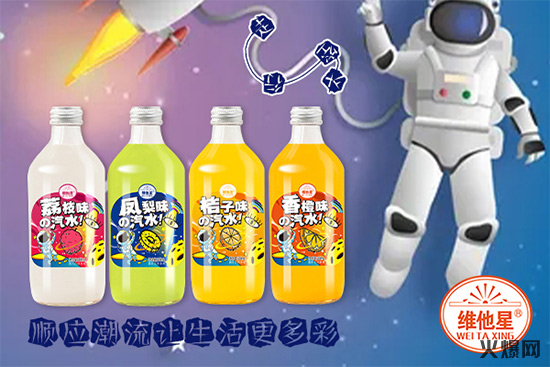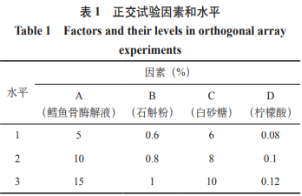中央媒体走基层|《中国日报》Yunnan sprouting into nation's 'vegetable basket'



Yunnan sprouting into nation's 'vegetable basket'
Poverty alleviation model expanded to enrich one of China's most fertile provinces
Long known for its breathtaking landscapes and ethnic diversity, Southwest China's Yunnan province is emerging as a national leader in specialty agriculture, transforming its once-impoverished rural regions into engines of economic renewal.
From sweet apples in Zhaotong to traditional cured meats in Xuanwei and leafy vegetables in Luliang, the highlands are cultivating not only crops, but also opportunities for the 88 counties in the province that have been lifted out of poverty.

Farmers pick apples at a production base of Zhaotong Chaoyue Agriculture in Zhao tong, Yunnan province. XU JING/FOR CHINA DAILY
Fruitful harvest
Perched on the Yunnan-Guizhou Plateau and located in the heartland of the Wumeng Mountains in the northeast of the province, Zhaotong was once a city with the largest impoverished population in China.
Now, it is Southwest China's largest producer of apples thanks to its low latitude, high elevation, generous sunshine and dramatic daily temperature swings. These ideal growing conditions have made Zhaotong's apples sweet, crisp and nationally recognized.
With nearly 66,700 hectares under cultivation, Zhaotong harvested 1.3 million metric tons of apples last year, generating a revenue of 15 billion yuan ($2.07 billion). The apple industry has directly benefited 138,000 households, touching the lives of over half a million residents, according to local officials.

Two farmers divide apples of various sizes into different categories at an orchard in Zhaotong in September. CHEN XINBO/XINHUA
In April of last year, apples from Zhaotong made headlines when they were included in the fresh food supply aboard the Shenzhou XVIII spacecraft.
A major individual orchard in Zhaotong's Zhaoyang district covers 6,670 hectares with 118 apple varieties, one of the largest of its kind. Yang Longjiang, director of the district's industry development center, said advanced agricultural techniques learned from New Zealand and elsewhere are yielding world-class results.
"The orchard applies dwarf root-stocks that yield fruit faster and uses an integrated drip irrigation system that can precisely deliver water and fertilizer, conserving precious resources," Yang said.
"Combined with monthly wages from working at the base, we can earn 80,000 yuan a year and live a better life," said Ding Kaiwen, a former tobacco farmer who works in the orchards with his wife. Their family also receives an annual land lease payment of 14,400 yuan.
The district's agricultural officials report that formerly impoverished households have seen average income increases of 4,800 yuan thanks to the apple boom.
Branding has also played a crucial role in the success of the local apple industry. The Zhaoyang Red, one of the region's signature apple brands, has earned 93 green food and multiple organic certifications, paving the way for exports to the United Arab Emirates, Thailand and beyond.
Premium supermarket chains such as Sam's Club and Freshippo stock Zhaotong apples, selling at 8 to 14 yuan per kilogram. Orchard tourism and fruit-picking festivals have also emerged to breathe new life into local economies.
High-tech ham
Xuanwei ham, a dry-cured specialty with a legacy dating back centuries, is another Yunnan food specialty that has found its place on the dinner tables of Chinese consumers. It sits alongside Italy's Parma ham and Spain's Iberico ham. In 2023, the pig farming and ham industry in Xuanwei generated over 18.5 billion yuan, producing nearly 70,000 tons of ham and lifting thousands of households out of poverty.

Cured meats are air-dried at a production base of local manufacturer Lap-Jon Ham in Xuanwei, Yunnan province. [Photo provided to CHINA DAILY]
Zhou Jianmei, quality control manager at leading brand Lap-Jon Ham, recalls the moment they realized tradition alone wouldn't be enough. "We knew the quality of our pigs was top-tier, but our production chain lagged behind Europe. So we went there to learn."
Inspired by European models, Lap-Jon Ham invested 360 million yuan into advanced facilities, importing Italian fermentation systems and automating the aging process to allow year-round production.
A modern factory capable of producing 3,200 tons of premium ham annually has been built, alongside salami and ham-filled pastries. Last year, the company reported an output value of 478 million yuan and created over 600 local jobs.
"We learned from the refined, standardized production processes abroad and adapted them to the unique characteristics of Xuanwei ham," Zhou said.
According to government data, over two-thirds of Xuanwei's 330,000 rural households are involved in pig farming. Their average incomes rose by 28,100 yuan in 2023, while 36,000 families previously living in poverty saw an average annual increase of 4,300 yuan.
Six "ham manors" in the city have further boosted income for 2,800 households and created more than 500 jobs, with average monthly wages hitting 4,500 yuan.
Zhou said the primary challenge now is popularization. While beloved in parts of southern China where cured meat has long been a traditional delicacy, Xuanwei ham remains unfamiliar in the country's north.
"When you mention 'ham' in the north, many people still think of processed sausage," she said, adding that better awareness among Chinese consumers in the future is expected to expand the market.
Leafy ambitions
The agricultural reinvention of Yunnan extends to the vast, fertile plains of Luliang county in Qujing, the largest flatland on the Yunnan-Guizhou Plateau.

A farmer harvests Chinese broccoli at a plantation in Luliang, Yunnan province, in January last year. WANG YONG/FOR CHINA DAILY
The unique geography and climate of the county in the east of the province have made it an agricultural powerhouse, and the thriving vegetable industry is feeding cities across China and reaching tables as far away as Dubai.
With 6,000 hectares of cultivated land yielding 2.45 million tons of vegetables in 2023, Luliang generated 7 billion yuan, nearly half the county's total agricultural output.
The region has an average annual temperature of 15.2 C, a frost-free period of 335 days, fertile soil and abundant water resources, making year-round production of vegetables possible.
"Thanks to these favorable natural conditions, we can grow a wide variety of fresh, eco-friendly vegetables all year round," said Zhang Raofang, deputy director of Luliang's agriculture and rural affairs bureau.
Italian lettuce, romaine, napa cabbage and Shanghai bok choy are among the stars of the leafy industry. About 93 percent of its harvest is shipped to markets from Beijing to Dubai, Zhang said.
Advanced infrastructure has contributed to the success of the industry. Home to Southwest China's largest cold-chain logistics park, the county dispatches 10,000 tons of vegetables daily, serving the Guangdong-Hong Kong-Macao Greater Bay Area and elsewhere. In 2023, its import-export vegetable trade reached $5.16 million, a 237 percent year-on-year increase.
"The lettuce grown here is thick, crisp and of excellent quality," said Zhang Zixiong, chairman of Yunnan Yuanheng Agricultural Development Corp. His company manages 180 hectares and works with local farmers on another 1,333 hectares.

Farmers reap seasonal vegetables in a field in Luliang in May. WANG YONG/XINHUA
The company recently expanded its export markets to Southeast Asia and the Middle East and has hired young college graduates majoring in foreign languages to help manage its business overseas.
Huang Hongdong, a major vegetable producer in the county, cultivates 6.67 hectares of Chinese arrowhead (Sagittaria sagittifolia), an aquatic tuber known as cigu in Chinese. "Half of our products now go to Malaysia. They really value the taste and quality," Huang said.
The vegetable industry employs 210,000 people in Luliang, from planting and processing to packaging and transport, boosting average household incomes by over 28,000 yuan a year, according to Zhang from the agriculture bureau.
As demand for safe, high-quality vegetables grows, Luliang is playing a greater role in both China's national "vegetable basket" and the global food supply chain, he added.
This year marks the final stage of a five-year transition period aimed at consolidating the gains made in poverty alleviation and ensuring a seamless shift toward rural vitalization.
By cultivating high-quality agricultural specialties and expanding access to broader markets, residents in some of Yunnan's formerly poor regions have not only emerged from poverty but are embracing sustainable opportunities for long-term improvement in their lives.
来源:中国日报


(责任编辑:综合)
-
 发布者:蒙蒙 浏览量:6619发布时间:2022/3/30 16:07:31 健康时代,什么样的产品会获得消费者的青睐?什么样的产品会获得经销商的追捧?什么样的产品更赚钱?饮
...[详细]
发布者:蒙蒙 浏览量:6619发布时间:2022/3/30 16:07:31 健康时代,什么样的产品会获得消费者的青睐?什么样的产品会获得经销商的追捧?什么样的产品更赚钱?饮
...[详细]
-
 2020年3月31日行业库存5256万重箱,环比上月增加436万重箱,同比去年增加786万重箱。月末库存天数20.77天,环比上月增加1.81天,同比去年增加3.12天。
...[详细]
2020年3月31日行业库存5256万重箱,环比上月增加436万重箱,同比去年增加786万重箱。月末库存天数20.77天,环比上月增加1.81天,同比去年增加3.12天。
...[详细]
-
 小车卡在步行阶梯上,动弹不得。海峡网讯厦门日报记者 兰京) 前不着地,后无退路。昨日上午8时30分许,一辆网约车在雨幕中,冲下软件园二期的步行阶梯——越过四段台阶后,卡在最后一
...[详细]
小车卡在步行阶梯上,动弹不得。海峡网讯厦门日报记者 兰京) 前不着地,后无退路。昨日上午8时30分许,一辆网约车在雨幕中,冲下软件园二期的步行阶梯——越过四段台阶后,卡在最后一
...[详细]
-
 东南网5月18日讯本网记者 潘贤利 通讯员 王小敏)17日晚7时许至18日上午早高峰,鲤城交警大队接连查处5部超员车辆。17日19时05分许,鲤城交警大队三中队执勤民警在东浦沿江路设卡查纠违法时,发现
...[详细]
东南网5月18日讯本网记者 潘贤利 通讯员 王小敏)17日晚7时许至18日上午早高峰,鲤城交警大队接连查处5部超员车辆。17日19时05分许,鲤城交警大队三中队执勤民警在东浦沿江路设卡查纠违法时,发现
...[详细]
-
添加迷迭香提取物及植酸的鱼鳞明胶可食膜对鲫鱼保鲜效果的影响(一)
 鲫鱼是我国主要的淡水鱼类之一,被广泛用作许多鱼类制品的原料。然而,鱼类含有丰富的蛋白质,易腐败变质,因此研究鲫鱼保鲜方法具有重要的现实意义。传统的保鲜方法有冷冻、低温、辐照、超高压、化学及生物保鲜法。
...[详细]
鲫鱼是我国主要的淡水鱼类之一,被广泛用作许多鱼类制品的原料。然而,鱼类含有丰富的蛋白质,易腐败变质,因此研究鲫鱼保鲜方法具有重要的现实意义。传统的保鲜方法有冷冻、低温、辐照、超高压、化学及生物保鲜法。
...[详细]
-
 鳕鱼属脊椎动物门Vertebrata)鳕形目Gadiformes),广泛分布于各大洋。鳕鱼是我国远洋捕捞的重要鱼种之一,我国每年的鳕鱼加工量达到40~50万t。鳕鱼营养丰富,含有众多人体所需常量和微量
...[详细]
鳕鱼属脊椎动物门Vertebrata)鳕形目Gadiformes),广泛分布于各大洋。鳕鱼是我国远洋捕捞的重要鱼种之一,我国每年的鳕鱼加工量达到40~50万t。鳕鱼营养丰富,含有众多人体所需常量和微量
...[详细]
-
天下財經週報:美台央行利率會議登場,升息到頂了嗎?|天下雜誌
 台灣央行本週召開理監事會議,預期升息將見頂。美國聯準會召開利率決策會議,微弱的正向市場情緒,會不會被澆熄?人工智慧大突破,馬斯克盛讚的聊天機器人,功能有多強大?您的閱讀篇數已達上限立刻訂閱全閱讀,即可
...[详细]
台灣央行本週召開理監事會議,預期升息將見頂。美國聯準會召開利率決策會議,微弱的正向市場情緒,會不會被澆熄?人工智慧大突破,馬斯克盛讚的聊天機器人,功能有多強大?您的閱讀篇數已達上限立刻訂閱全閱讀,即可
...[详细]
-
 海沃德20+10+8戈贝尔两双 爵士末节反超胜魔术发布时间:2017-11-27 19:09 来源:豫都网 我要投稿[摘要]数据 投篮点 实录 北京时间2016年11月12日,NBA常规赛继续进行,爵
...[详细]
海沃德20+10+8戈贝尔两双 爵士末节反超胜魔术发布时间:2017-11-27 19:09 来源:豫都网 我要投稿[摘要]数据 投篮点 实录 北京时间2016年11月12日,NBA常规赛继续进行,爵
...[详细]
-
 欧文自曝夺冠后首先和科比视频 曼巴精神激励我发布时间:2016-11-06 10:35 来源:豫都网 我来说说 我要投稿[摘要]北京时间7月15日,《福克斯体育》报道,克利夫兰骑士队历史性以4-3逆转
...[详细]
欧文自曝夺冠后首先和科比视频 曼巴精神激励我发布时间:2016-11-06 10:35 来源:豫都网 我来说说 我要投稿[摘要]北京时间7月15日,《福克斯体育》报道,克利夫兰骑士队历史性以4-3逆转
...[详细]
-
 东南网5月18日讯本网记者 潘贤利 通讯员 王小敏)17日晚7时许至18日上午早高峰,鲤城交警大队接连查处5部超员车辆。17日19时05分许,鲤城交警大队三中队执勤民警在东浦沿江路设卡查纠违法时,发现
...[详细]
东南网5月18日讯本网记者 潘贤利 通讯员 王小敏)17日晚7时许至18日上午早高峰,鲤城交警大队接连查处5部超员车辆。17日19时05分许,鲤城交警大队三中队执勤民警在东浦沿江路设卡查纠违法时,发现
...[详细]

 程序员节?解码“格子衫群体” 没想到女生还挺多
程序员节?解码“格子衫群体” 没想到女生还挺多 厦门地铁1号线岛内大部分站点市政改造及景观提升本月底将完成
厦门地铁1号线岛内大部分站点市政改造及景观提升本月底将完成 2024年潜江龙虾嘉年华汉服国风秀活动举行
2024年潜江龙虾嘉年华汉服国风秀活动举行 汤神手感滚烫宣布回归 三分四连中半场狂砍20分
汤神手感滚烫宣布回归 三分四连中半场狂砍20分 泉州第七次全国人口普查综合试点入户登记启动
泉州第七次全国人口普查综合试点入户登记启动
